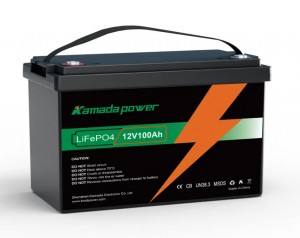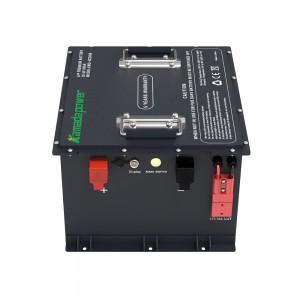Introduction
Selecting the right golf cart battery suppliers is a critical step in the procurement process. Beyond evaluating battery performance and cost, it’s essential to consider the supplier’s reputation, after-sales service, and long-term collaboration potential. This kamada power article offers a comprehensive purchasing guide to assist you in making an informed decision when choosing a golf cart battery suppliers.
Understand Golf Cart Battery Your Needs

Golf Cart 12V 100AH LIFEPO4 BATTERY

36V Golf Cart Batteries
Before initiating the procurement process, it’s crucial to clarify your requirements and budget. Consider the following factors:
- Comparison of Battery Types and Application Scenarios:
| Battery Type |
Voltage (V) |
Capacity (Ah) |
Cycle Life (times) |
Applicable Scenarios and Pros & Cons |
| Flooded Lead Acid Battery |
6v, 8v,12v |
150-220 |
500-800 |
Suitable for scenarios with medium to low cost and standard performance requirements, but lower charging efficiency. |
| Sealed Lead Acid Battery |
6v, 8v,12v |
150-220 |
800-1200 |
Offers longer lifespan and faster charging times, suitable for scenarios requiring high efficiency. |
| Lithium-ion Battery |
12v,24v,36v,48v,72v |
100-200 |
2000-3000 |
High efficiency and longer lifespan, suitable for high-end golf carts and heavy-duty applications. |
- Battery Specifications and Application Scenarios:
| Golf Cart Type |
Usage Frequency |
Operating Environment |
Recommended Battery Specification |
| Leisure Cart |
Low |
Indoor/Flat Terrain |
Flooded Lead Acid 6V, 150Ah |
| Professional Cart |
High |
Outdoor/Irregular Terrain |
Sealed Lead Acid 8V, 220Ah |
| Electric Cart |
High |
Outdoor/Mountainous |
Lithium-ion 12V, 200Ah |
Golf Cart Battery Quality Assessment
Ensuring high-quality batteries is vital for performance and reliability. Here are specific steps to evaluate battery quality:
- Review Product Specifications: Request detailed product specifications, including battery capacity, voltage, and cycle life from the supplier.
- Demand Certification Certificates: Ensure the supplier’s batteries meet industry standards like ISO 9001 and UL certifications.
Golf Cart Battery Price and Cost-Benefit Analysis
When choosing a golf cart battery suppliers, it’s essential to consider both the unit price and overall cost-effectiveness. Here are practical steps for a price and cost-benefit analysis:
- Compare Total Ownership Costs:Total Ownership Cost = Initial Purchase Price + Maintenance Costs + Replacement Costs – Value of Old Battery for Recycling.Example: Suppose a 6V, 200Ah battery costs $150 initially, with an average lifespan of 600 cycles. The energy cost per charge is $0.90, leading to a total energy cost of $540, exceeding the initial purchase price.
- Inquire About Volume Discounts and Additional Charges: Ask about volume discounts, special promotions, and additional charges such as transportation, installation, and old battery recycling
Warranty and Support Services
Warranty and support services play a pivotal role in supplier selection. Here are specific recommendations:
- Review Warranty Terms: Carefully read the warranty terms to understand coverage, duration, and limitations.
- Test Customer Support: Test the supplier’s customer support response time and problem-solving capabilities.
Frequently Asked Questions
1. How do I know when to replace my golf cart battery?
Typically, golf cart batteries last between 2 to 6 years, depending on usage and maintenance. Signs indicating the need for replacement include longer charging times, reduced vehicle run times, and physical damage like casing cracks or leaks. See details how long do golf cart batteries last
2. How can I extend the lifespan of my golf cart battery?
To extend battery lifespan:
- Regular Charging: Charge the battery once a month, even if not in use.
- Avoid Over-Discharging: Avoid completely discharging the battery.
- Regular Inspection and Cleaning: Check and clean battery terminals and connections regularly.
3. How do I choose the right type of battery for my golf cart?
Evaluate the battery type based on your cart type, usage frequency, and operating environment. For leisure carts, a flooded lead acid battery might be cost-effective, while for professional and electric carts, sealed lead acid or lithium-ion batteries offer longer lifespan and better performance.
4. What are common maintenance issues for golf cart batteries?
Regular inspections, cleaning, and proper charging are key. Common issues include loose terminals, corrosion, charger failures, and aging due to improper storage.
5. How can I evaluate the reputation and service quality of a golf cart battery suppliers?
Evaluate through online reviews, understanding the supplier’s history, and inquiring about warranty policies and customer support services.
6. Can I use batteries from different brands mixed together?
Avoid mixing batteries from different brands or types as their performance and charging characteristics may differ, leading to reduced performance or battery damage.
7. Can I charge golf cart batteries outdoors during winter?
Charge batteries indoors during winter to maintain charging efficiency and prevent potential damage due to low temperatures.
8. What kind of support will the supplier provide if the battery encounters problems during use?
Most suppliers offer warranty services and customer support. Ensure you understand the supplier’s warranty policy and support services before purchasing.
Conclusion
Choosing the right golf cart battery suppliers involves careful needs analysis, battery quality assessment, price and cost-benefit analysis, and consideration of warranty and support services.
By following the practical purchasing advice provided and conducting a comprehensive supplier analysis, you can ensure finding a supplier that meets your needs and offers long-term value.